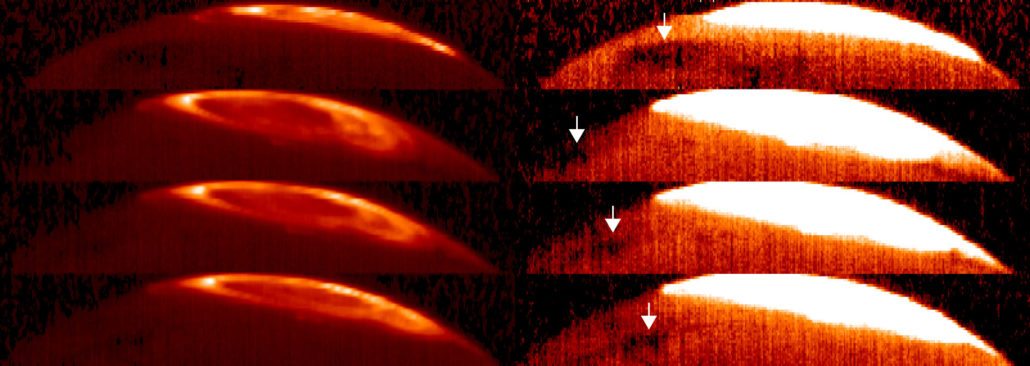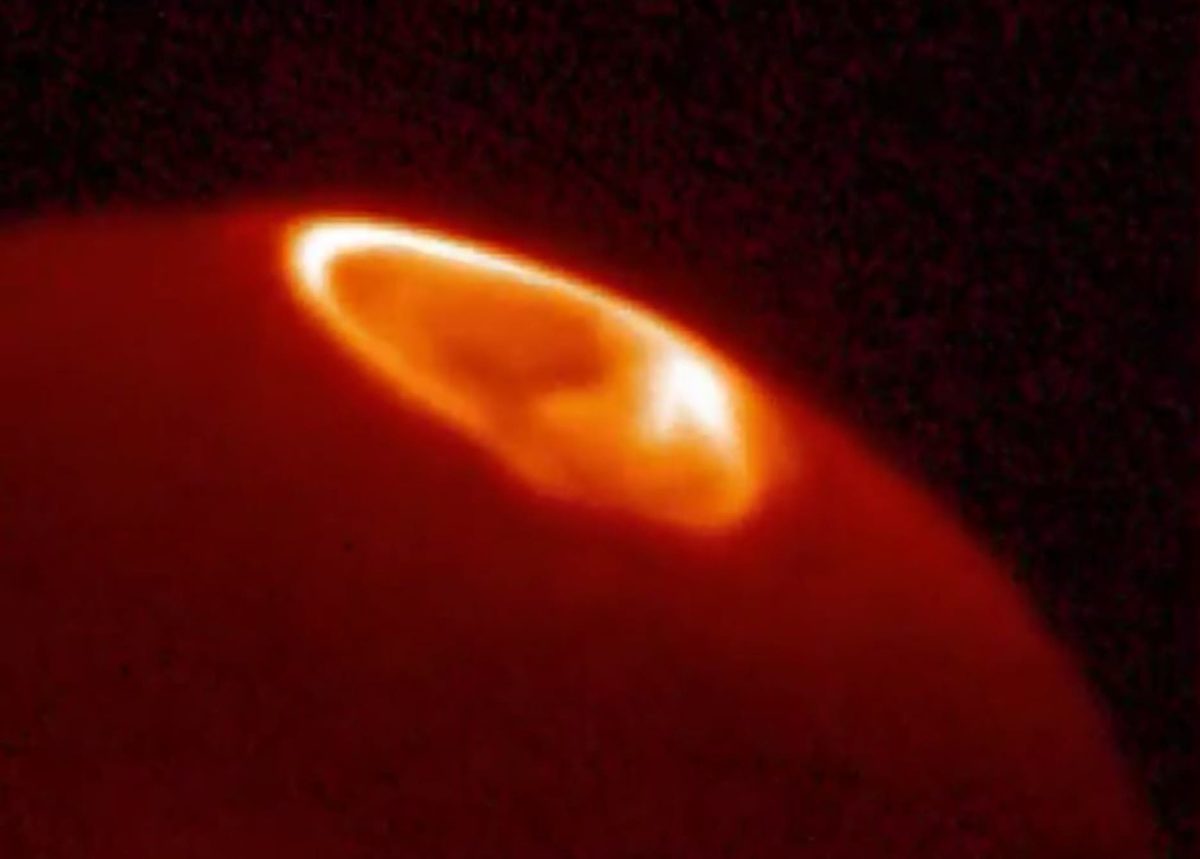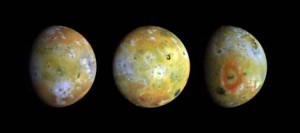A prominent feature of Jupiter’s surface is the Great Red Spot, which has been observed continuously since the 1830s. Jupiters red spot was easy to discover because of its prominent coloring. Now a new spot has been discovered that can only be seen in the infrared.
Dubbed the “Great Cold Spot,” it exists not in the thick clouds of Jupiter, but in its thin upper atmosphere, a region driven by Jupiter’s strong magnetic field. Jupiter magnetic field causes ionized particles to stream toward its magnetic poles, creating aurora similar to those we see on Earth. When ionized particles strike Jupiter’s upper atmosphere, it causes that region of the upper atmosphere to heat up. It’s generally been thought that the temperature of the upper atmosphere was rather static, with its temperature cooling as you move farther from the polar regions. But detailed infrared images show Jupiter’s upper atmosphere is complex and dynamic.

The Great Cold Spot (indicated by the white arrow) it seen near the hot region of Jupiter’s magnetic pole. Credit: Tom Stallard/ESO
Using data from NASA’s InfraRed Telescope Facility, a team analyzed the thermal properties of Jupiter’s upper atmosphere near the polar region. They found a cold region similar in size to the Great Red Spot. With data gathered over 15 years, the team could see the cold spot evolve and change, growing and shrinking over time. This indicates that the feature is persistent and dynamic, similar to the Great Red Spot. Thus the upper atmosphere has a complex weather system similar to that of Jupiter’s lower atmosphere.
It remains to be seen whether there are other long-lasting features of Jupiter’s upper atmosphere, but for now we can say that parts of it can be pretty cool.
Paper: Tom S. Stallard, et al. The Great Cold Spot in Jupiter’s upper atmosphere. Geophysical Research Letters. doi: 10.1002/2016GL071956 (2017)











